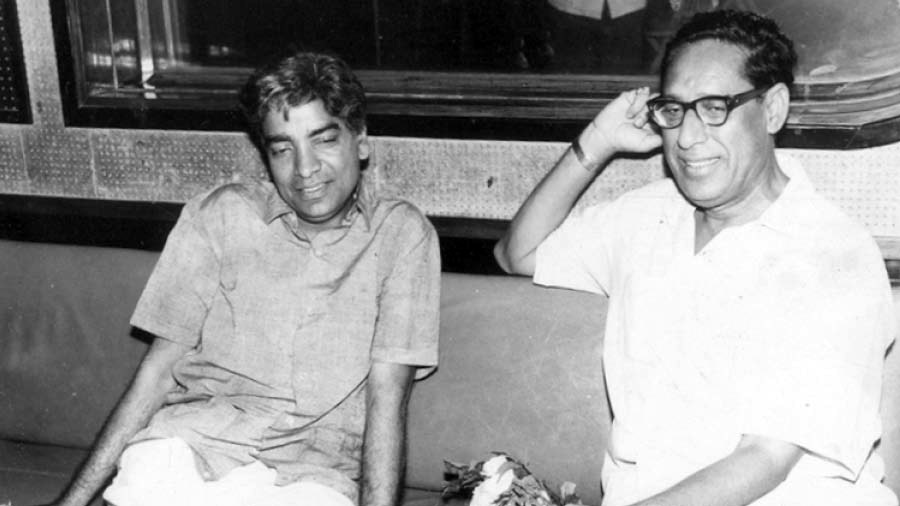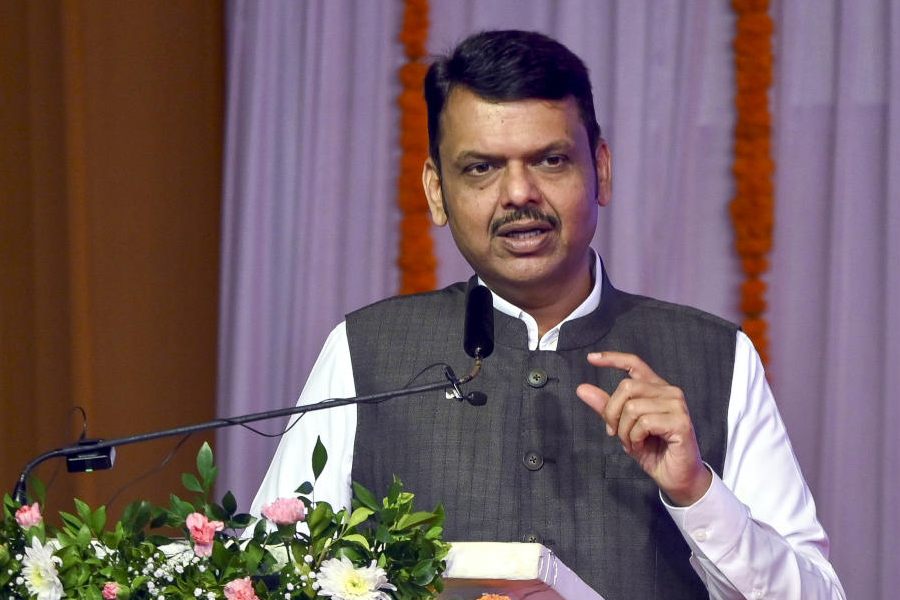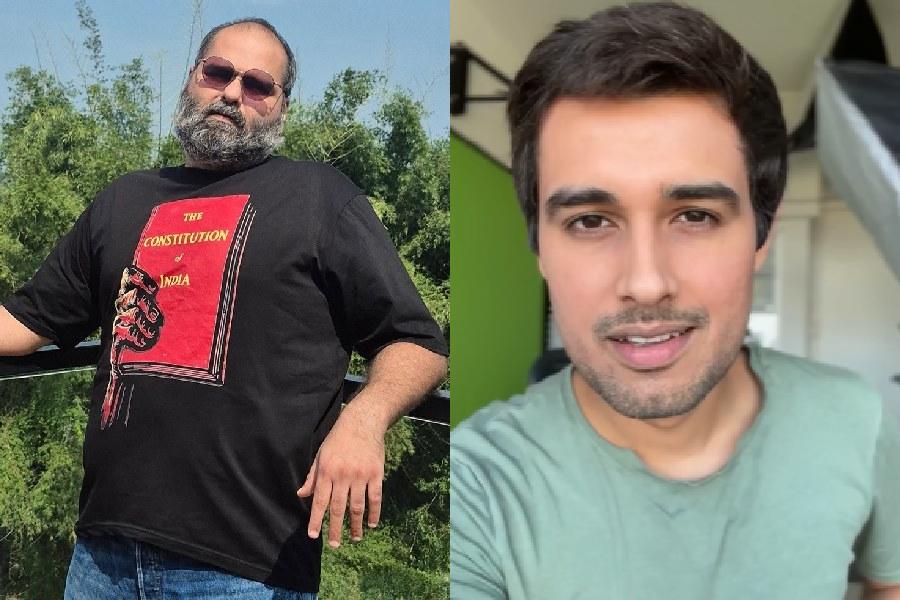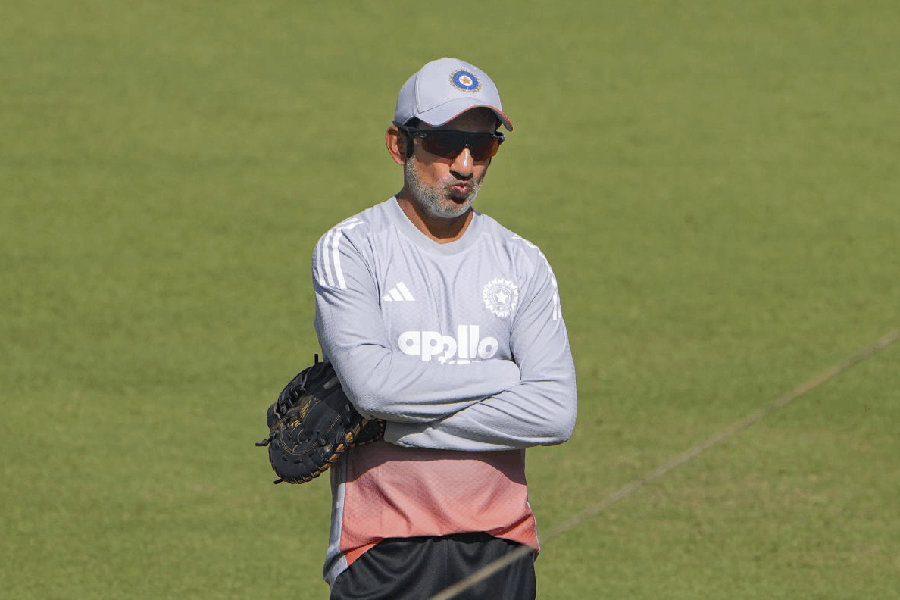It has gone down in the annals of Indian music as the only ghazal that Ustad Amir Khan, the founder of the Indore Gharana, sang. To understand why that is unique, one has to look at the notions of purity attached to Indian classical music, and the disdain with which its legendary exponents looked at any form that deviated from the straight and narrow. That Ustad Amir Khan deigned to sing a ghazal says as much about its writer, Mirza Ghalib, as it does its composer: the ustad’s foremost disciple and a legend in his own right, Pandit Amarnath.
On the 100th death anniversary of Mirza Ghalib in 1969, the Government of India planned a documentary on the poet. It was to be directed by M.S. Sathyu, at the time recognised for his work in theatre and as the award-winning art director in Chetan Anand’s Haqeeqat. It was to be scripted by Shama Zaidi, with Kaifi Azmi narrating the film as Ghalib’s voice. The music was entrusted to Pandit Amarnath. It is interesting that in 1969, M.S. Sathyu also directed the play Aakhri Shama, based on Fahrtullah Baig’s Dilli Ka Yaadgar Mushaira. Kaifi Azmi had dramatised Baig’s work, which cast Balraj Sahni as Ghalib.
It took all of Pandit Amarnath’s persuasive skills to convince his guru
For the documentary, Kaifi Azmi suggested that Ustad Amir Khan be requested to sing the title ghazal. Pandit Amarnath was more than a little surprised to hear that the ustad had consented to singing a ghazal. On the day of the shoot, however, Khan Saheb refused to sing. It fell upon Pandit Amarnath to reason with his guru. It turned out that Amir Khan had only nodded at the idea in the middle of a drinking session. He had not agreed to sing. After all, at this stage of his life, he wasn’t going to sully his legacy by singing a ghazal.
It took all of Pandit Amarnath’s persuasive skills to convince his guru. Ustad Amir Khan eventually relented only on account of an unassailable faith in his disciple. As Amarjeet Jus, one of Pandit Amarnath’s finest disciples, says, “Ustad Amir Khan did not even like to sing thumris, so to get him to sing a ghazal would need some convincing. What Panditji said to Khan Saheb was, ‘Ek baar sun lijiye. I have composed it to do justice to your taste as a musician who only sings compositions with a heavy classical base.’” And thus was born Rahiye Ab Aisi Jagah Chalkar Jaha Koi Na Ho, composed in Raga Shahana.
Rekha Bhardwaj, another illustrious disciple of Pandit Amarnath, says, “It’s a powerful raga steeped in rasa. As far as I understand, the rendition of ghazals in the early days was gayaki-based, unlike sugam sangeet or light music. If you listen carefully, the first line in the second stanza of this ghazal is sung without a rhythm, before it returns to the theka-based rhythmic structure. The early pioneers of ghazal like Begum Akhtar and Zohra Bai Agrewali fostered a style that owes itself to the hoary tradition of the courtesan or tawaif in princely courts. There were no mikes in those early days, which made it necessary that the singer had perforce to rely on the throw of her voice, while keeping the gayaki intact. That is what guruji did with the composition, rendered in full-throated splendour by Khan Saheb.”
The film also featured four other songs that traverse a whole spectrum, from the modern beats of Kalkatte Ka Jo Zikr (rendered in Bhupinder’s trademark sonorous voice) to the more traditional Bazeecha-e-atfal and Muddat Hui Hai sung by Pandit Amarnath himself, while Shamshad Begum did full justice to another gem of a composition, Wo Aa Ke Khwaab Mein.
One of the four great exponents of Hindustani classical music
Often referred to as a musician’s musician, Pandit Amarnath was voted among the four great exponents of Hindustani classical music – alongside Bade Ghulam Ali Khan, Kumar Gandharva and his guru, Amir Khan – by music critic Dr Raghava Menon. He was that rare guru who did not stop at being a vocalist. He excelled as a composer, a teacher, a musicologist, a scholar and an author, whose dictionary of Hindustani classical music remains unparalleled. He pioneered the khayal and composed over 200 bandishes. Despite being committed to the purity of classical music, his repertoire also included the score for the 1955 film starring Balraj Sahni, Garm Coat, directed by Amar Kumar and written by noted author Rajinder Singh Bedi (based on Nikolai Gogol’s story The Overcoat), for which he got none other than Lata Mangeshkar to render four songs.
As his daughter Gajra Kottary narrates, “Panditji used to stay with his best friend and contemporary, Jaidev, in a house in Rohtak Road in Delhi. Jaidev’s best-known song, Allah Tero Naam, Ishwar Tero Naam, sung by Lata Mangeshkar in Hum Dono, was actually composed in Rohtak Road, long before it was recorded in Bombay. Panditji even went with Jaidev for the recording. As they both knew Lataji well, Panditji suggested to her that in the final repeat of the refrain when she sang ‘Ishwar tero naam’, she could just extend a taan into the ati teep or extra-high register. Lataji implemented this suggestion, and it sounded so brilliant that she told him she looked forward to singing for him too one day… Lataji liked the Meera bhajan in Garm Coat, Jogia Se Preet Kiye Dukh Hoye, so much that she featured it in the first album she brought out of her life’s 10 best songs, an LP record by HMV.” As a mark of her respect for the composer, the legend also refused to be paid for her efforts.
It remained his only film score as Pandit Amarnath went back to the rigours of pure classical music, though he returned to the genre of light music with customary flair for M.S. Sathyu’s TV series Choli Daman in the late 1980s. Rekha Bhardwaj remembers “Guruji being very excited about Choli Daman. He was as much a composer as he was a poet, apart from being a pioneering vocalist who established the style of the gharana that Amir Khan sahab founded. He had been a composer with All India Radio early in his career. Sathyu sahab’s Ghalib resulted in a long association between the filmmaker and guruji. I was fortunate enough to have sung a few songs composed by him in Choli Daman.”
These include Heer Bhijgi Sialawali and Faiz Ahmed Faiz’s immortal Rang Pairahan Ka, whose folkish beats are redolent with the earthy fragrance of Punjab, and are, in the tradition of the best compositions of Pandit Amarnath, both simple and yet intricate.
“I think the subject was dear to him as he was born in Pakistan and the memories of those days never left him. He would become nostalgic and narrate episodes from his adolescence,” says Rekha, going on to paint a warm visual portrait of her guru’s “sudden childlike chuckle, a mischievous twinkle in his eye, his trademark posture, sitting cross-legged, sometimes an elbow resting on his knee. It’s an image I still carry in my heart. It makes me smile thinking of it today. Even as he composed the songs, he would sing them to us. He wanted Rang Pairahan Ka to be recorded as a duet with Shanti Sharma, his most senior and finest student, and me. Shantidi had a high-pitched voice, while I was more base. He recognised that the contrast between our pitches would make for an interesting combination.”
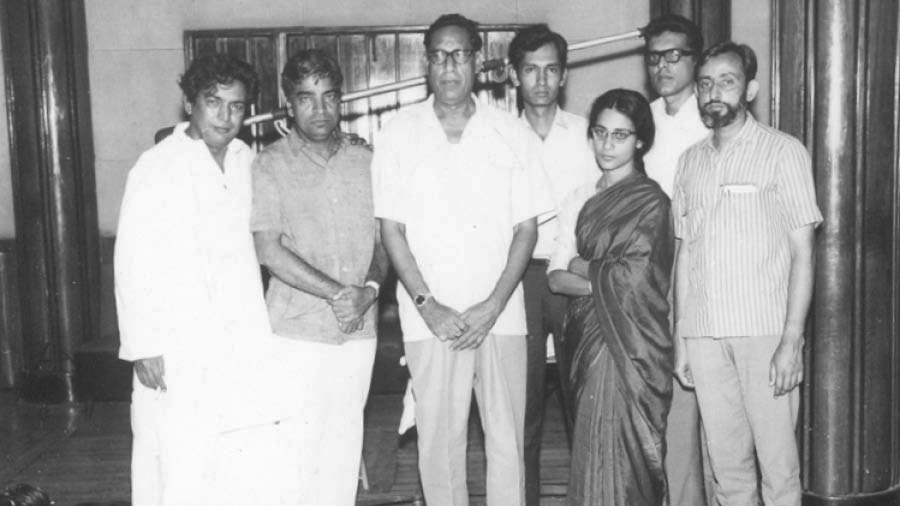
(L-R) Kaifi Azmi, Pandit Amarnath, Ustad Amir Khan, Shama Zaidi and M.S. Sathyu. Pandit Amarnath Memorial Foundation
His patience was legendary
Rekha would eventually be seen on screen in the song. “I don’t remember whose idea it was – Sathyu sahab’s or guruji or Kuckoo Mathur, in whose studio in Hauz Khas we were recording. Shantidi did not want to appear on screen and so Kuckooji’s daughter Shivani lip-synced her bit while I appeared on screen. Shantidi rendered a couple of lovely Heers, including Teri Chandni Da. I had known him as a guru, but it was special to sing for him, seeing this aspect of him. I remember while recording Heer Bhijgi, I had taken up a job. I had little time for rehearsals and this affected my singing. His patience was, however, legendary. Moreover, he would never be satisfied with just teaching a song. There was a world behind each song, each composition, and he would make it a point to introduce us to the philosophy behind each. Take the title song of Choli Daman, for example. He would talk about the changing colours of folk music with the region from which it originated. He would demonstrate indefatigably how the same raga could inspire a myriad rasas. It was a learning experience like no other.”
Rekha remembers the day when as a young disciple, she walked with Pandit Amarnath from Bhartiya Kala Kendra to the Shriram Centre bus stop. He stopped suddenly and turned to Rekha. His words still resonate with her. “It is rare that a shishya meets the guru at the right time and the guru meets the right shishya at the correct time. It has happened, so make the most of it.”
The nuances of the guru-shishya tradition
If Rekha’s reminiscences of Pandit Amarnath offer an insight into the guru-shishya parampara, Pandit Amarnath’s association with Ustad Amir Khan provides another aspect, one that illuminates the nuances of the tradition. Pandit Amarnath started taking lessons from his first guru, Prof B.N. Datta, in 1942. This was soon after he gave his first performance on Lahore Radio, becoming, at the age of 18, the youngest musician on the rolls of AIR Lahore, which boasted a galaxy of veterans. Pandit Amarnath apprenticed with B.N. Datta for five years.
During this period, Ustad Amir Khan used to sing from AIR Delhi every week, mostly on Sundays. Despite his straightened circumstances, Pandit Amarnath somehow managed to put together Rs 285 for a Philco radio to listen to the legend. He had his first darshan of Ustad Amir Khan when the Punjab Music Society invited him to a concert in Lahore. In his own words, “Unfortunately, a couple of days before he was to arrive, I went down with a fever. It seemed impossible to leave home. Anyway, I draped myself in a blanket and reached YMCA Hall, Mall Road. I sat right at the back, just in case I had to make a getaway. Meanwhile, a tall, sturdy man in wide pajamas, shirt and short coat, cap in hand and a Salimshahee pump shoe passed me by. He looked like any nondescript office superintendent. He was nothing like the Ustad Amir Khan of our imagination – a big pagdi, hookah in hand, imposing. But to our surprise the ‘superintendent-like’ man, who had moments earlier walked past me, went on to the stage. And even more surprisingly, he began to sing. Darbari. We were mesmerised… eventually there arose in me a great desire to learn from him. Whenever I heard him it would seem to me that he had over many births been in the process of becoming my guru… his voice was becoming an indelible part of my subconscious.”
For a fortnight after that, Pandit Amarnath could not touch his tanpura. “When I first heard Khan saheb, it was like taking a morphine injection — I was doped for days,” he wrote. He came to Delhi in the wake of the partition and renewed his search for Amir Khan. “For us of course Delhi meant Amir Khan for he too was the Qutub Minar itself, inordinately tall,” he would recall. He eventually traced Ustad Amir Khan’s residence in Ajmeri Gate and became a disciple in 1948. But not before being refused umpteen times. Every time Pandit Amarnath requested Ustad Amir Khan to take him under his wing, the latter would insist that there was nothing to teach and nothing to learn. Things reached such a pass that the young Amarnath, hurt, told Amir Khan that he would no longer ask but that Khan saheb himself would offer to teach. And so it came to pass. A guru-bhai would eventually liken their relationship to the one between Amir Khusro and Nizamuddin Auliya.
The true test of a guru
In his fascinating memoir of his relationship with Ustad Amir Khan (put together by his daughter Bindu Chawla and published by the Pandit Amarnath Memorial Foundation, it is a work that needs to be revived and translated afresh for a new generation), Pandit Amarnath brings to light the many dimensions of the guru-shishya tradition, with all its trials and tribulations. He highlights Ustad Amir Khan’s impish sense of humour.
In one instance, he mentions a soiree at which a number of masters were performing. One of them commended the maestro Bundu Khan: “You have crossed the ocean of music.” Pat came Amir Khan’s repartee: “You may have crossed the ocean, but did you bother to find out how much water lies where?” This was followed by the incredible sight of Amir Khan’s father Shahmir Khan running after him, walking stick in hand.
Another time, Amir Khan somehow managed to get his cousin Faiyyaz, a sarangi player, to sing a thumri they used to love as children. It was Muharram, a time when one abstains from music. It was only later that Faiyyaz remembered the holy date. Suitably mortified, he told Amir Khan, “You have made me sing in Muharram – one is not permitted to do that.” Amir Khan’s response: “Arre, why are you worried? What is banned is singing in tune.”
Years later, Pandit Amarnath would reflect on his two gurus, B.N. Datta and Amir Khan. At the end of his five-year apprenticeship with B.N. Datta, the latter would whisper into Panditji’s ear: “My only seva, or service, is that you teach music to everyone as I have taught you, without holding anything back, giving in abundance, for this is how this vidya or knowledge is meant to be passed on.” Prof Datta would himself guide Amarnath to Amir Khan. On the first day, the day of Amarnath’s ‘ganda-baandh rasam’, the sacred ritual of discipleship, Ustad Amir Khan would whisper, as is the practice, into his ear: “Do not give away this vidya or knowledge to anyone or everyone who asks for it. Give only to the rare and deserving — and that too only after the sacred ceremony.” It had taken him close to four decades to realise that both his gurus had said the same thing to him.
The true test of a guru lies in his perfect identification with the disciple, so that there is little to differentiate between the two, even as they forge their unique identities. So it was with Ustad Amir Khan and Pandit Amarnath. The story goes that Ustad Vilayat Khan once stopped outside the studio at AIR, enchanted to hear Amir Khan’s rendition of Darbari. He waited for the maestro to emerge from the studio. To his surprise it was Pandit Amarnath who materialised. Ustad Amir Khan himself experienced something similar. He would narrate how once, when listening to Amarnath on the radio, he had wondered: “When did I record this?” The guru had found the perfect disciple. The shishya had given his guru the perfect dakshina.
(Shantanu Ray Chaudhuri is a film and music buff, editor, publisher, film critic and writer)

